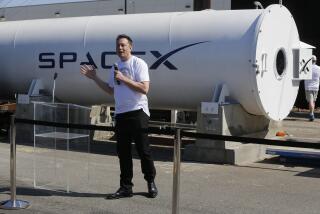Space Shuttle and the Future
- Share via
In T. A. Heppenheimer’s articles (Editorial Pages, Jan. 29 and 31) he bemoans the fact that the shuttle, a five-year-old vehicle, was built with 10-year-old technology. He suggests concentrating on developing the new technology of the Trans-Atmospheric Vehicle (TAV, or space plane) rather than rebuilding the shuttle fleet, even though the TAV’s technology will also be 10 years old five years after it flies.
This leads to the problem with Heppenheimer’s suggestions: the TAV is a fine idea, and should be pursued, but it doesn’t solve the immediate problem--we are short on spacecraft to launch large payloads, both military and civilian.
Fuzzy optimism aside, the TAV won’t be flying payloads for at least 10 years. Increased Titan 3 production can take up some of the loads, but not the largest, such as space telescope, Spacelab, and some existing and proposed military spacecraft. The only near-term option for large payloads is the shuttle, and industry experts estimate that the first replacement could be operational within three years.
Heppenheimer correctly indicates that we can now build better spacecraft than the shuttle, and we should. The central point that he misses is that we need large payload launch capacity now, and that means the shuttle. Once the production line is restarted, it would be foolish to build just one--the second and third shuttles off the line will be much more economical than the first.
We have experienced a national tragedy. With the loss of the Challenger and its crew, we must reevaluate our program, and then proceed. The wisest course would be to rebuild and expand the shuttle fleet for our immediate needs. The technology is basically sound, despite the recent disaster. We should also pursue the promising new technology of TAV, which can support our future expansion in the development of space.
TERRY C. SAVAGE
Redondo Beach




